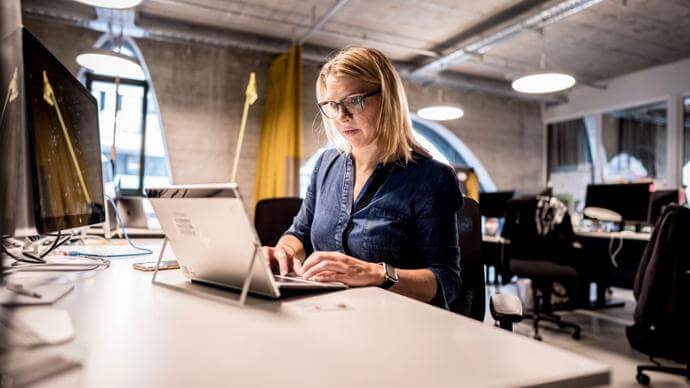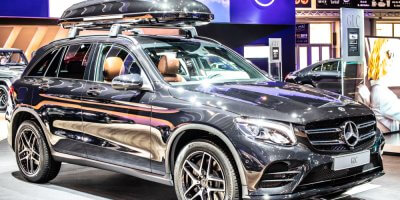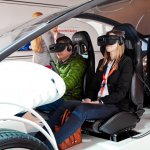
Porsche Digital Lab Director Anja Hende at work. Source: Porsche Newsroom
How Porsche uses technology to inspire, collaborate, and innovate
AUTOMAKERS, while focused on building self-driving cars, are also keen on using technology to improve existing processes and functions.
Porsche is one such company. Although a global brand, the company employs just 30,000 employees — a fraction of the workforce in comparison to many of its competitors.
However, its size is also an advantage. It allows the company to innovate more intimately.
In an exclusive interview with Tech Wire Asia, Porsche Digital Lab Director Anja Hendel explained how the company sees technology and innovation.
“Technology should be used to solve customers’ and employees’ problems.”
“At the digital lab, we explore different technologies, inspire the organization about the possibilities that the technology brings, and then work with employees to build solutions that make products and processes better.”
While that’s a great philosophy, Hendel explains how the company avoids losing sight of it the hustle and bustle of everyday business.
“One of our main focus areas is artificial intelligence, especially in production.
“When engineers build a car in this era, they put together several connectors that make the electronic components work. In a fast-paced environment, however, despite best efforts, not all of those connections are perfect.
“That’s a challenge because it means either we risk sending the car out and having the customer run into issues after the sale, or spend a lot of time checking and fixing those before they leave the factory.
“The digital lab worked with engineers in the production unit to solve this problem using AI. What we did was focus on the acoustics — the sound that is produced when each connector is snapped into place.
“That sound is analyzed by AI to determine if the connection is right or needs fixing.”
Hendel explained that in the German automakers’ production facility, sound plays a big role as engineers open and close doors, bonnets, etc several times to ensure that things are right.
Acoustics, therefore, is critical, and the digital lab is, therefore, using AI to help improve all those processes and to make production a lot faster and better, and ultimately ensuring that when cars leave the factory floor, they meet the highest quality standards and customer expectations.
Of course, the AI use case that Hendel described to Tech Wire Asia is incredibly interesting but the back story she shared about how she and her team helped inspire the business about the connection between acoustics and technology and the role of AI shows the organization’s commitment to using technology — not for the sake of it — but to improve processes, and employees’ lives.
“After a lot of deliberation, we attached a microphone (powered by Raspberry Pi — a tiny, low cost, computer) to a coffee machine to listen to the different sounds and vibrations made by it when producing different kinds of coffee.
“That data — sounds and vibrations — fed into an AI model helped listen to a sound and identify what kind of coffee preparation (espresso, latte, etc) was chosen by the employee.
“This was showcased to all employees at the annual Digital Days conference at our head office in Stuttgart, Germany to open their eyes to the possibilities. The ‘innovation’ in the production unit, with electrical connectors, was one of the first use cases.”
Hendel had a spark in her eye when she talked about the work that her organization does with technology, but working with new and cutting-edge technology isn’t what gives her joy. It’s the ability to inspire people, collaborate with them, and innovate that holds the magic.
“Innovation is beautiful when bringing together the right people,” concluded a proud Hendel.
READ MORE
- Aviation giant Airbus turns to chatbots to engage top talent
- In the digital economy, MoneyGram focuses on getting the basics right
- How FedEx uses technology to delight customers in the digital era
- FedEx Express/Ground collaboration will improve last-mile delivery
- Growth is fabulous: Why Foodpanda’s app and team are growing rapidly






